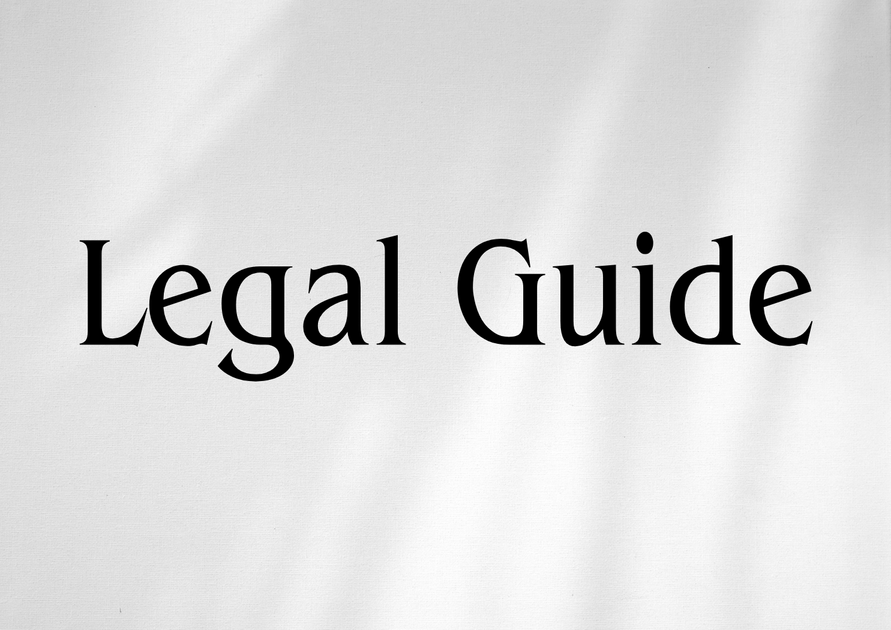Introduction
In recent years, the Kingdom of Saudi Arabia has embarked on an ambitious trajectory to modernize its aviation sector, recognizing air transport as a critical pillar of economic growth and international connectivity. The evolution of aviation legislation in Saudi Arabia not only affects regional players and multinational airlines, but also establishes new opportunities and challenges for neighboring jurisdictions — particularly the UAE, whose commercial and legal interests are closely intertwined with those of Saudi Arabia. As the aviation landscape across the Gulf Cooperation Council (GCC) becomes more integrated and dynamic, it is essential for UAE-based executives, HR managers, compliance officers, and legal practitioners to understand the legal reforms unfolding in Saudi Arabia, as well as their impact on cross-border operations, competition, and regulatory alignment.
This expert legal advisory explores the substantive changes in Saudi aviation law, analyzes their implications for UAE-based organizations, and offers strategic guidance on compliance and risk mitigation. Drawing upon primary legislative sources such as the Saudi Civil Aviation Law, directives from the General Authority of Civil Aviation (GACA), and recent decrees driving sectoral transformation, this article situates these developments within the broader context of UAE law and regulatory frameworks, referencing UAE Federal Decree-Law No. 20 of 2022 on Civil Aviation and other relevant statutes. The aim is to provide practical, actionable insights for stakeholders looking to proactively manage legal exposure and capitalize on evolving opportunities across regional airspace.
Table of Contents
- Overview of Saudi Aviation Law and Governance
- Key Legislative Milestones in Saudi Aviation Law
- Comparative Analysis: Old and New Aviation Legislation
- Implications for UAE Businesses and Regional Players
- Legal Compliance Strategies for UAE Organizations
- Case Studies and Hypothetical Scenarios
- Risks of Non-Compliance and Mitigation Approaches
- Conclusion and Forward-Looking Perspectives
Overview of Saudi Aviation Law and Governance
Institutional Framework
The regulatory oversight of civil aviation in Saudi Arabia primarily rests with the General Authority of Civil Aviation (GACA), which derives its mandate from Royal Decree No. M/44 dated 18/07/1426H (23 August 2005 CE). GACA’s responsibilities encompass the licensing and inspection of airports, carrier certification, aircraft registration and airworthiness, enforcement of safety standards, and investigation of aviation incidents. Complementing GACA’s operational scope are ministerial regulations and alignment with international conventions, notably the International Civil Aviation Organization (ICAO) Chicago Convention, to which Saudi Arabia and the UAE are both contracting states.
Legal Architecture
The Saudi Civil Aviation Law, first promulgated in 2005 and amended through subsequent Royal Decrees, is the principal legislative instrument governing aircraft operations, airspace management, passenger rights, liability regimes, and penal provisions. Layered atop the core statute are GACA-issued Executive Regulations, safety circulars, and technical guidelines. Saudi aviation law is shaped by the drive to enhance operational safety, harmonize with global best practices, and develop the sector as part of Vision 2030 — a wider national effort to diversify the Saudi economy and open its markets to international investment.
Key Legislative Milestones in Saudi Aviation Law
From Foundational Regulation to Modernization
The trajectory of Saudi aviation legislation can be delineated into distinct phases:
- Pre-2005: Reliance on ad hoc ministerial decrees with limited codification, creating inconsistencies and operational ambiguities for airlines and airport operators.
- 2005 Saudi Civil Aviation Law (Royal Decree M/44): Formalized sector regulation, introduced unified licensing, established clear airspace sovereignty, and detailed safety as well as liability provisions.
- 2010s Enhancement/Amendments: Executive Regulations and GACA Circulars addressed modern safety protocols, cargo shipment rules, and consumer protections.
- 2021–2024 Transformation: Sweeping reforms under Vision 2030 led to further amendments to the Civil Aviation Law, elevation of the GACA’s role, liberalization of the market to encourage foreign direct investment, new dispute resolution mechanisms, and enhanced penalties for non-compliance.
These milestones collectively represent a shift from a regimented, government-dominated model to a competitive, internationally aligned regulatory framework — mirroring developments seen in other GCC states, including the UAE’s own reforms through Federal Decree-Law No. 20 of 2022 on Civil Aviation.
Highlighted Recent Developments
- Introduction of open skies agreements, facilitating greater market access and competition.
- Modernized liability and insurance requirements, particularly for carriers and airport operators.
- Stricter sanctions for violations, paralleling increased scrutiny on safety and environmental compliance.
- Implementation of digital systems for e-licensing and safety compliance, improving transparency and efficiency.
Comparative Analysis: Old and New Aviation Legislation
For UAE organizations operating in or with Saudi Arabia, understanding the differences between legacy and new frameworks is critical. The following table juxtaposes key features of the old and new Saudi aviation legal regimes, highlighting compliance implications and areas of alignment with the UAE sector:
| Aspect | Old Legal Framework (Pre-2005/2005) | Modern Framework (Post-2019 Reforms) | Commentary/Alignment with UAE |
|---|---|---|---|
| Licensing & Market Entry | Subject to high entry barriers, government selection | Marketplace liberalization; streamlined foreign carrier entry | Parallels UAE opening to FDI (Dubai Airport Freezone model) |
| Airspace Management | Rigid state-centric control, limited technology use | Introduction of digital airspace management, dynamic regulation | Tech convergence with UAE’s airspace modernization projects |
| Liability & Insurance | Limited statutory liability regimes, basic insurance | Detailed compulsory insurance, expanded carrier/airport liability | Reflects UAE Federal Decree-Law No. 20 of 2022, Art. 88–93 |
| Consumer Protections | Minimal, ad hoc complaint handling | Codified passenger rights, fast-track claims, compensation | Progress toward regional harmonization of passenger rights |
| Penalties for Non-Compliance | Isolated penalties, limited enforcement capacity | Escalating fines, suspension/revocation powers, blacklisting | Mirrors UAE’s strengthened Aviation Inspection Regime (Ministry of Justice guidelines, 2022) |
Visual Suggestion: A compliance checklist or process flowchart comparing Saudi and UAE regulatory steps for airline licensing and passenger claims resolution can further support understanding here.
Implications for UAE Businesses and Regional Players
Cross-Border Operations and Competition
The modernization of Saudi aviation law holds significant implications for UAE-based airlines (such as Emirates, Etihad), airport service providers, and logistics operators:
- Market Expansion: Liberalized entry routes and bilateral pacts create new opportunities for route development and alliance formation between UAE and Saudi carriers.
- Increased Competition: Open skies and private sector participation intensify industry competition, requiring UAE players to review market strategies and compliance postures.
- Regulatory Complexity: Multinational operators must update policies to comply with evolving Saudi rules even as they follow UAE legal standards. Divergences in dispute resolution, customs, and consumer complaints mechanisms demand careful contract drafting and risk allocation.
Contractual and Regulatory Due Diligence
With substantial overlaps yet crucial distinctions between Saudi and UAE aviation regimes, cross-border contracts — involving code-sharing, partnership, or ground handling — must be drafted (or reviewed) to:
- Explicitly allocate compliance obligations under both sets of laws (with an eye on governing law and arbitration clauses, per UAE standards under the Federal Arbitration Law No. 6 of 2018).
- Account for expanded Saudi liability and compensation schemes, ensuring harmonized insurance coverage and risk transfer.
Legal Compliance Strategies for UAE Organizations
Practical Guidance on Navigating Saudi Aviation Reforms
- Robust Internal Training: Airline management and operational staff must be updated on new GACA regulations, digital compliance platforms, and reporting mandates.
- Integrated Insurance Solutions: Policies should be reviewed to ensure sufficiency of coverage under both UAE and Saudi law, with a focus on new liability ceilings and mandatory insurance provisions.
- Data and Technology Compliance: With Saudi electronic registration and e-licensing now required, companies should invest in interoperable IT systems validated under both GACA and UAE Ministry of Justice cyber-regulatory standards.
- Consumer Complaint Handling: Passenger-facing entities must establish expedited claims resolution processes compatible with both Saudi and UAE legal requirements; appoint a regional complaint officer or ombudsman, as recommended by GACA Circular 68/2022 and the UAE Ministry of Human Resources and Emiratisation (MHRE) Customer Charter.
Compliance Checklist Table
| Compliance Action | Saudi Requirement (GACA) | UAE Counterpart | Recommended Best Practice |
|---|---|---|---|
| Carrier Licensing | Annual certification, e-licensing | 5-year renewable aircraft registration (Decree-Law 20/2022) | Align renewal cycles and prepare dual documentation |
| Safety Audits | Mandated periodic GACA inspections | MOJ/MOHRE-mandated audits | Schedule joint audits timed for both jurisdictions |
| Passenger Claims Process | Fast-track (45 days) | Customer Charter timelines (60 days) | Adopt most stringent standard (<45 days) |
| Liability Insurance | Minimum SAR 350M per incident | UAE minimums set per Art. 89, Decree-Law 20/2022 | Maintain coverage at higher (regional) minimum |
Case Studies and Hypothetical Scenarios
Case Study 1: Joint Venture Airline Launch
Scenario: A UAE-based airline forms a joint venture with Saudi investors to operate a new low-cost carrier.
- Applicable Laws: GACA Executive Regulations on airline licensing (2023); UAE Federal Decree-Law No. 20 of 2022 (UAE aircraft registration and foreign ownership).
- Legal Challenges: Harmonizing ownership, licensing, and insurance documentation for both jurisdictions; ensuring dual compliance management structures and periodic safety audits aligned with both authorities’ schedules.
- Outcomes: Success hinges on detailed risk assessment, unified insurance arrangements, and proactive engagement with both GACA and UAE regulators.
Case Study 2: Passenger Rights Complaint
Scenario: A UAE-based corporate passenger files a claim for denied boarding on a flight departing Riyadh, operated by a Saudi-based carrier.
- Applicable Laws: GACA Passenger Bill of Rights (2022 update), UAE Federal Law No. 8 of 1981 on Civil Aviation (as amended).
- Legal Challenges: Determining governing law for compensation, claims process alignment, and resolution forum (Saudi vs. UAE consumer protection authority).
- Outcomes: The claim is adjudicated under Saudi law (point of departure), but additional escalation possible via UAE platforms for UAE-resident claimants. Coordination between both countries’ legal teams is indispensable.
Risks of Non-Compliance and Mitigation Approaches
Penalty Escalation and Reputational Risks
The reformed Saudi legal framework imposes steeper administrative and criminal sanctions for breach, including:
- Fines of up to SAR 5 million for safety violations (GACA Circular 34/2023).
- Immediate suspension or revocation of operational licenses for repeated or gross violations.
- Mandatory public disclosure of sanctioned entities — raising regional reputational risk and triggering penalties back home (including parallel UAE Ministry of Justice investigations).
A penalty comparison chart would effectively illustrate these escalation pathways for compliance officers.
Mitigation Strategies
- Deploy integrated risk management platforms tracking both Saudi and UAE regulatory changes.
- Compile “living” compliance manuals subject to regular legal review and periodic external audits.
- Develop contingency protocols (rooted in both Saudi and UAE law) for rapid incident reporting, corrective action, and cross-border legal coordination.
Conclusion and Forward-Looking Perspectives
The current wave of aviation legislative reform in Saudi Arabia is transforming not only its domestic sector but also reshaping the GCC’s cross-border aviation ecosystem. For UAE businesses, these developments signal both expanded opportunity and heightened compliance demands. The trend toward harmonization — visible in shared safety, liability, and consumer protection norms — offers relief in the long term. Yet, interim divergences in legal procedures, documentation, and enforcement mean that UAE companies must remain vigilant, agile, and informed.
In summary, proactive legal risk management, dynamic compliance training, and thorough contractual due diligence are critical success factors for capitalizing on the evolving Saudi aviation landscape. Clients should engage regularly with specialized legal advisors, maintain close ties with regulatory agencies (both GACA and UAE authorities), and foster a culture of compliance that spans both national and international frameworks. As the region’s airspace continues to open and competition intensifies, those best prepared to navigate the shifting legal terrain — with insight, flexibility, and foresight — will unlock the greatest value in the years ahead.
This article is prepared in accordance with standards of professional legal consultancy and references only official legislative and regulatory sources, including the UAE Ministry of Justice, UAE Government Portal, and Federal Legal Gazette. For tailored advice or further discussion, please contact our UAE legal consultancy team.




